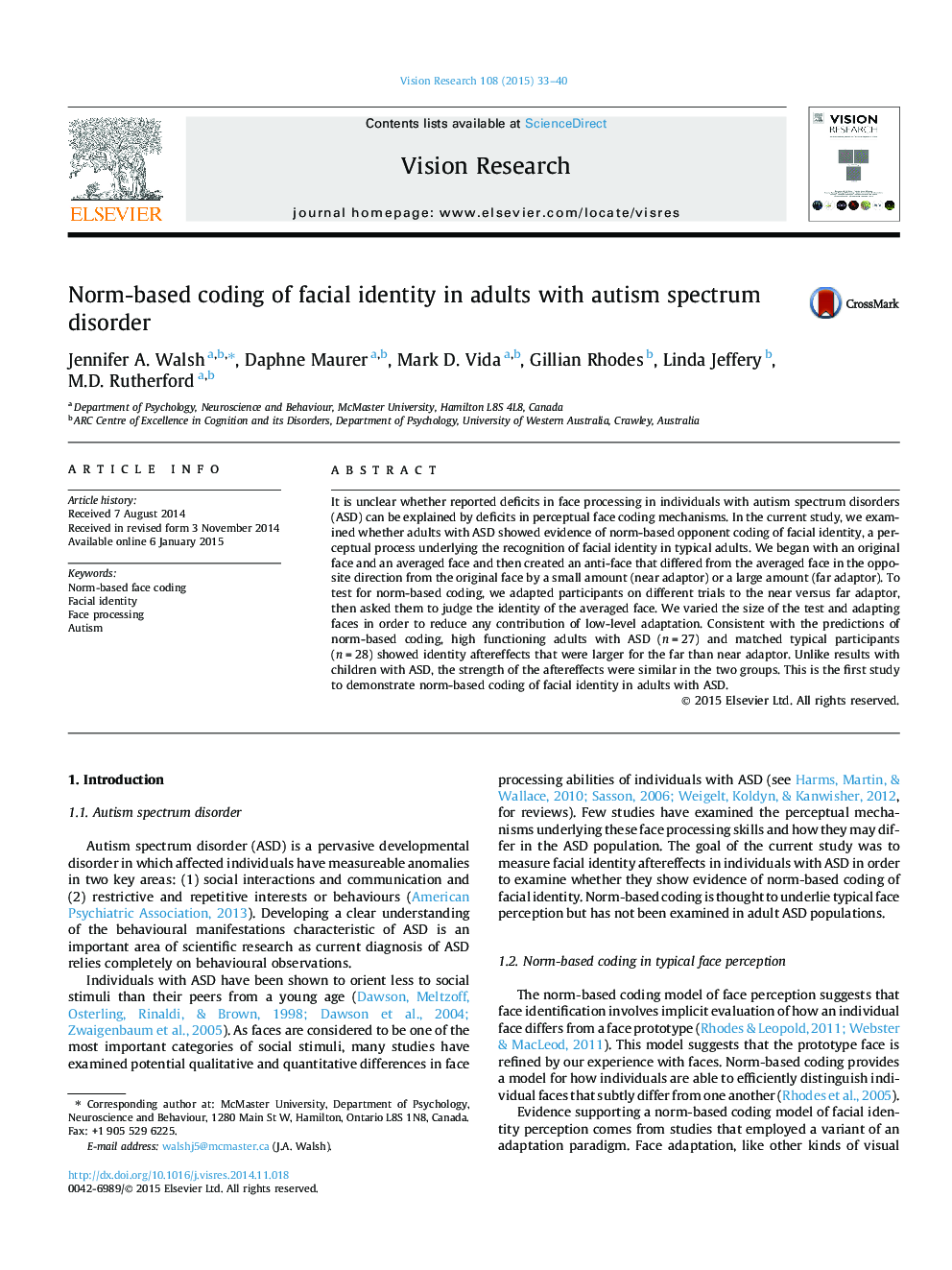| Article ID | Journal | Published Year | Pages | File Type |
|---|---|---|---|---|
| 4033692 | Vision Research | 2015 | 8 Pages |
•Adults with autism spectrum disorder (ASD) show typical identity aftereffects.•All participants showed larger aftereffects for more extreme adapting faces.•This pattern of results is predicted by the norm-based coding of face perception.•This is the first study to report intact norm-based coding of facial identity in ASD.
It is unclear whether reported deficits in face processing in individuals with autism spectrum disorders (ASD) can be explained by deficits in perceptual face coding mechanisms. In the current study, we examined whether adults with ASD showed evidence of norm-based opponent coding of facial identity, a perceptual process underlying the recognition of facial identity in typical adults. We began with an original face and an averaged face and then created an anti-face that differed from the averaged face in the opposite direction from the original face by a small amount (near adaptor) or a large amount (far adaptor). To test for norm-based coding, we adapted participants on different trials to the near versus far adaptor, then asked them to judge the identity of the averaged face. We varied the size of the test and adapting faces in order to reduce any contribution of low-level adaptation. Consistent with the predictions of norm-based coding, high functioning adults with ASD (n = 27) and matched typical participants (n = 28) showed identity aftereffects that were larger for the far than near adaptor. Unlike results with children with ASD, the strength of the aftereffects were similar in the two groups. This is the first study to demonstrate norm-based coding of facial identity in adults with ASD.
